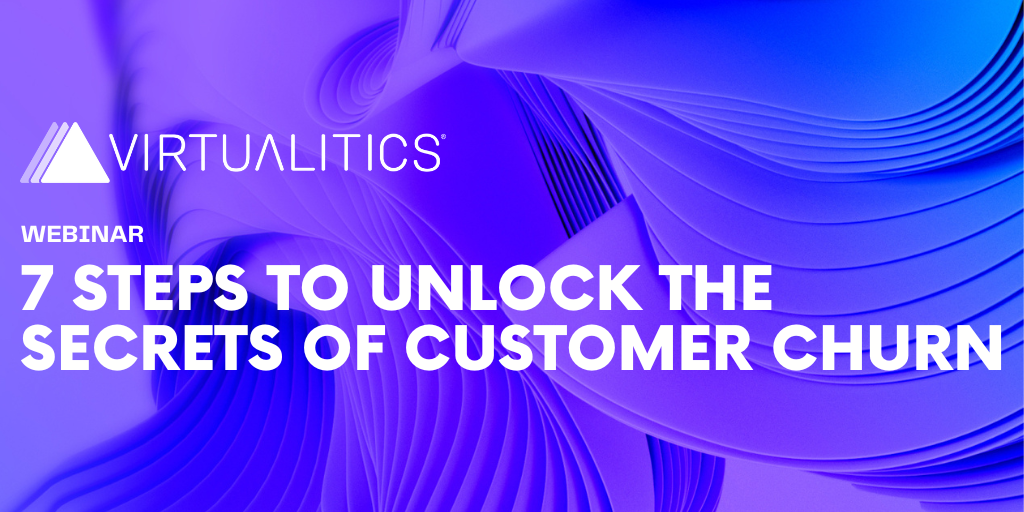7 Steps To Unlock The Secrets Of Customer Churn
.png)
Written by Virtualitics
Mar 1, 2023 9:12:14 AM

We recently hosted a webinar and demonstration to show how Intelligent Exploration and the Virtualitics AI Platform can help solve a classic business problem: customer churn. Just one of many practical applications, this example helps show how AI-guided exploration gets to the heart of the matter without requiring specialized data science techniques. Read on for an overview with video highlights, or watch the full webinar here.
Whether you’re producing physical products, or software, or providing continuing services, customer churn is probably on your radar. And the statistics on customer churn and the financial impact on businesses are plentiful:
- A variety of sources claim that it’s anywhere between 5 to 25 times more expensive to get a new customer than it is to keep a current one.
- It’s estimated that improving your retention rates by as little as 5% could raise profits by 25% to 95%.
Here’s the bottom line: companies that are prioritizing customer experience have been shown to be up to 60% more profitable than their counterparts that don’t. Customer experience and retention are clearly linked…but not every customer has the same needs.
That’s where your data comes into play. Your data can tell you what keeps customers coming back, and it can help you find the link between customers who leave. It just takes a little Intelligent Exploration to help you create the right customer experience for your organization.
We took a large, complex dataset, used the embedded AI algorithms to analyze it, and visualized it in 3D to clearly illustrate customer segmentation.
7 Steps To Target Customer Churn
Rebecca Woody, our Solutions Engineer, outlined seven steps that she used to identify the source of customer churn with our customer, helping them make the leap from raw data to impactful strategies:
1. Explore the obvious drivers.
There is value in the things you already know. But we don’t want to take those things at face value, and we don’t want to assume those are the only factors impacting your churn rates. Acknowledge what you know, then be willing to look beyond that.
2. Use Smart Mapping to explore possibilities that aren’t fixed.
Look at variables that you actually have some control over, because those are the things that lead to actionable output. Smart Mapping uses AI to surface a target’s key drivers from the list of user-defined options. After identifying the obvious drivers, Rebecca removed them and used Smart Mapping to go a level deeper.
3. Extract a Network Graph to identify customer communities.
Using that same data that you explored in tables and Smart Mapping, quickly create an explorable network graph using our patented Network Extractor. While other analytic techniques look at the data in the aggregate, network graphs show every node (in this case, customer), which allows us to spot patterns.
4. Identify high-churn communities.
Look for the clusters of customers that churned the most, and then use the AI Insight tool to surface the variables that define them. Understanding what defines those communities gives us the information we need to act on.
Intelligent Exploration finds and segments our customers into communities that share key characteristics—then our AI platform allows us to focus in on those communities that also experience high churn.
5. Determine which high-churn communities are worth keeping.
You want to make sure that the customers you keep are the ones that will actually give you a return on investment. Reducing customer churn does have a lot of potential for ROI, but that still doesn't mean there aren't some customers who aren’t worth the investment.
6. Define a retention program targeted to resolve causes of churn for that specific community.
When you understand who you're targeting and what it is you need to do to keep them, you can actually put a program in place. For example, if the data is showing that training and certification are critical to retention, maybe it makes sense to heavily discount that certification, or even give it away.
7. Calculate the KPIs for the program to track progress.
Proving the ROI of your data science and advanced analytics team illustrates that you are providing good value to the business, keeps momentum in place, and provides fuel for future projects.
